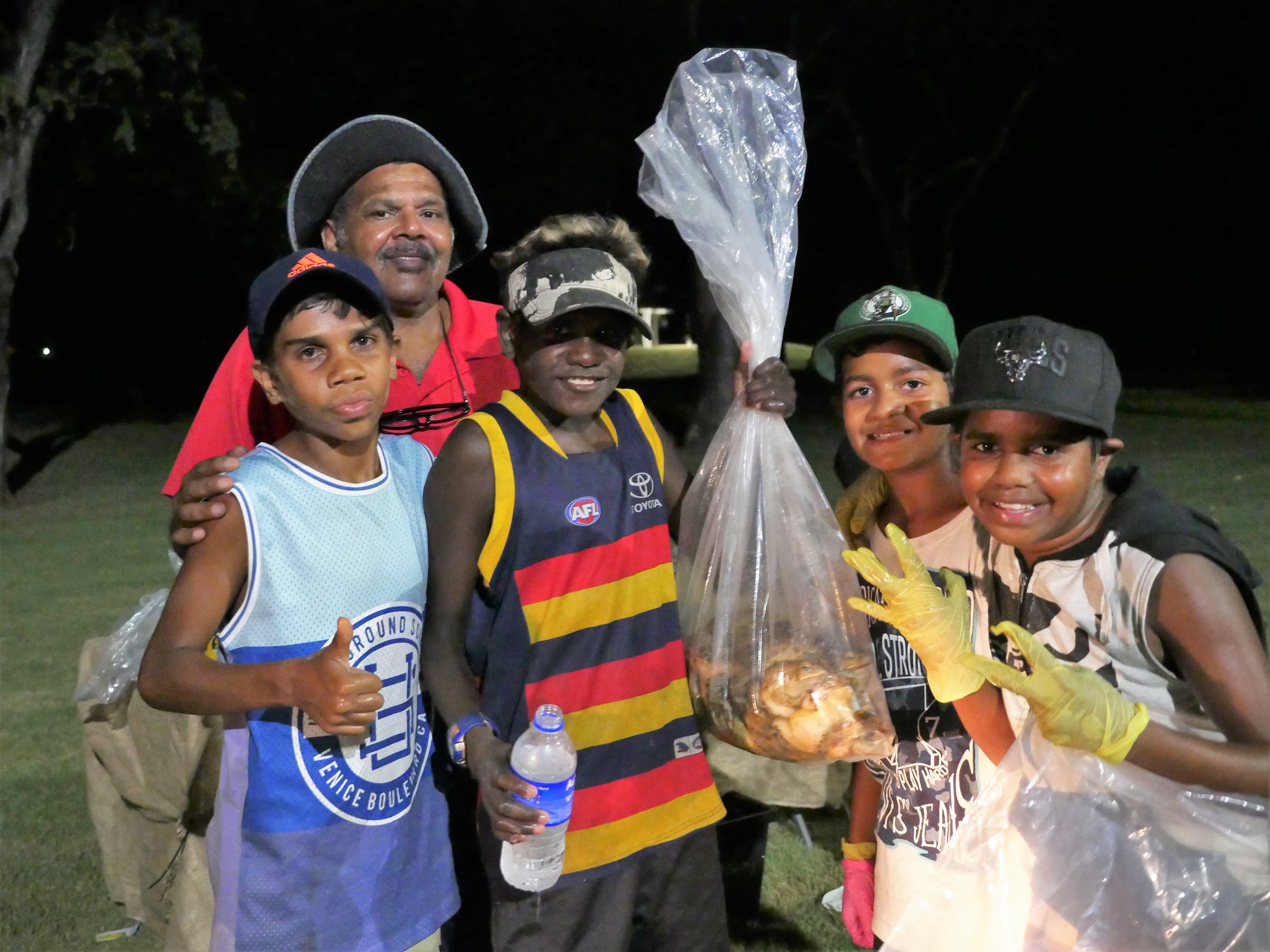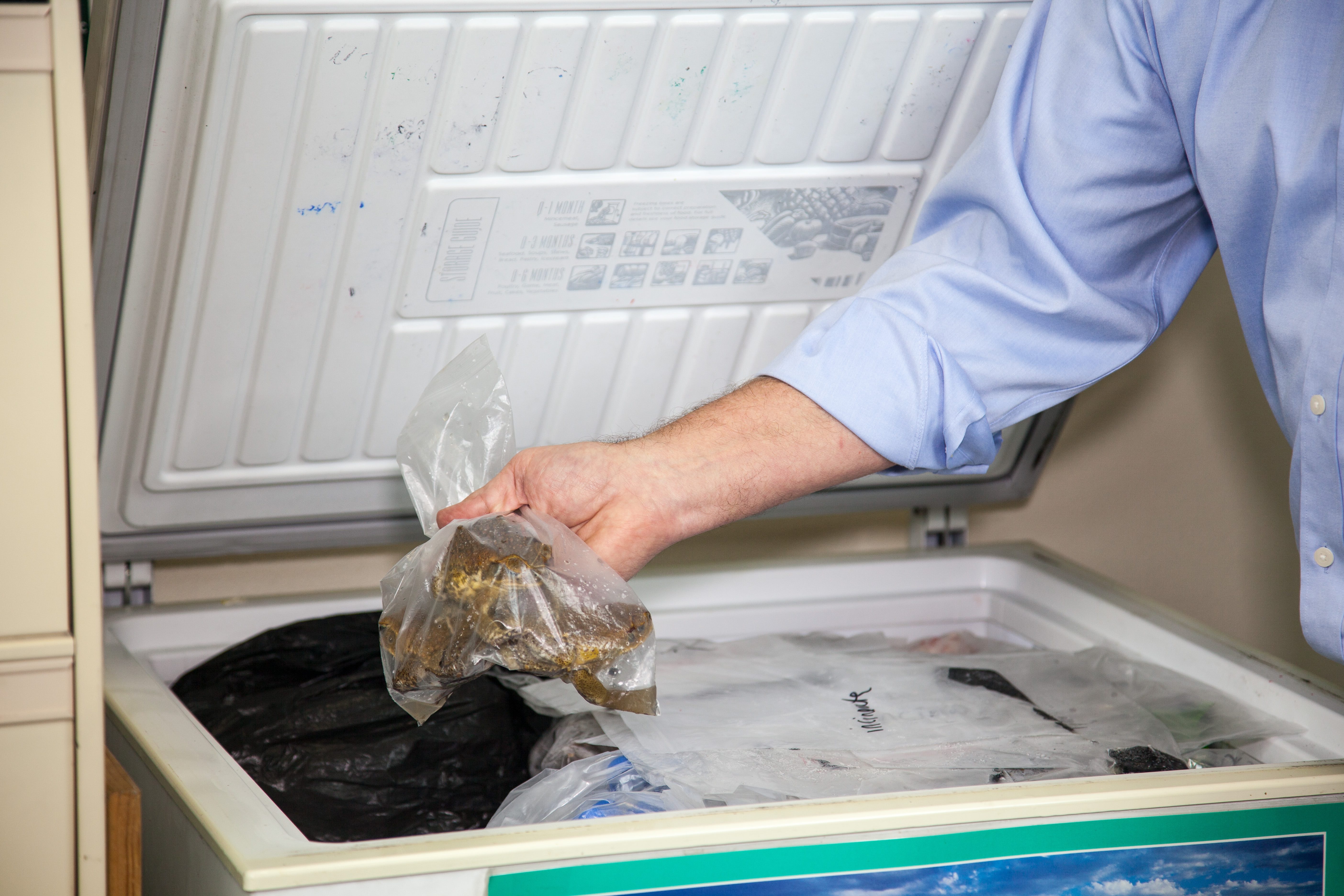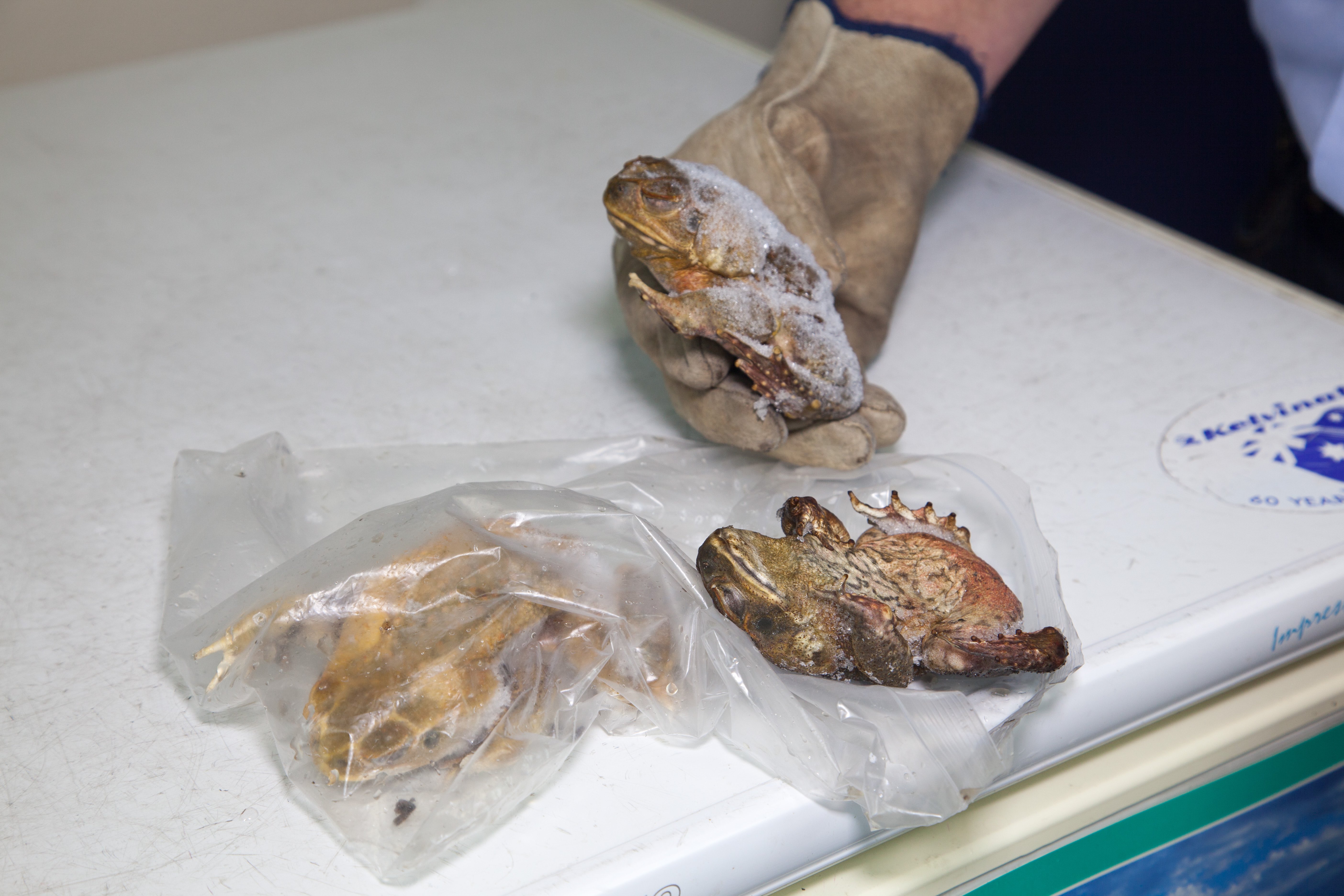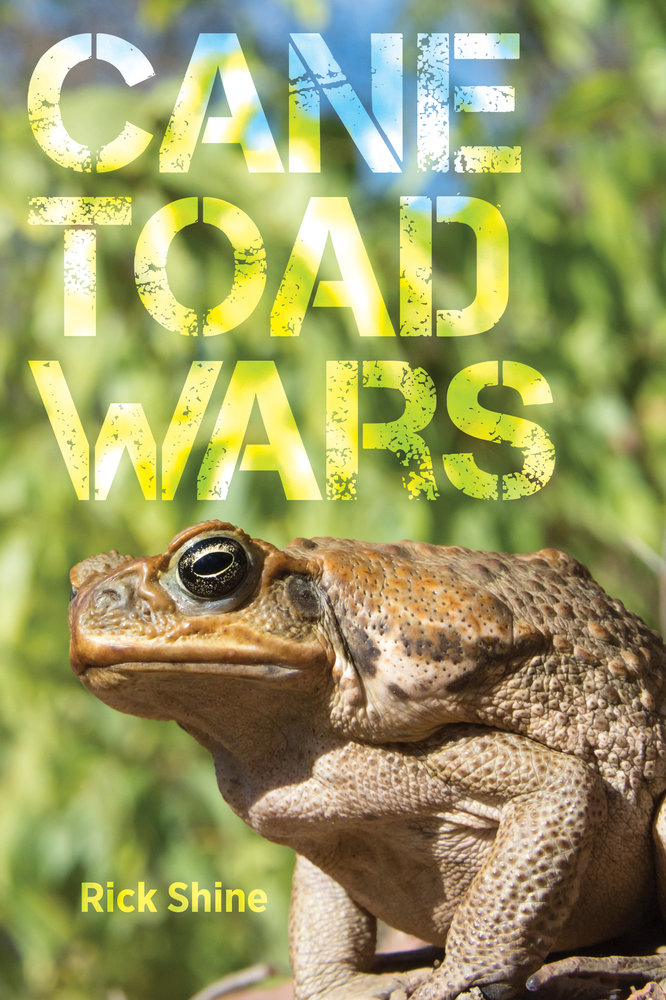The best way to humanely kill a cane toad
Should I kill a cane toad if I see one?
It’s a personal decision as to whether or not you should kill cane toads. They are not protected by Australian wildlife regulations but they ARE covered by animal-welfare laws – so if you do decide to kill a toad you need to do it humanely. We talk more about that below.
Our own conclusion is that it makes sense to kill cane toads only in situations where removing them is likely to reduce the species’ spread to new areas, or to decrease their impact on native wildlife. And when we need to kill cane toads, we think that we should do so as ethically and humanely as if we were culling Koalas.
How did we come to this very un-Australian perspective? Rick’s recent book Cane Toad Wars tells the whole story. But for a quick snapshot, we can examine some of the things that we have learned about cane toads over the last few years. Importantly, the ecological impact of cane toads is less wide-ranging and long-term than most people imagine. Toads kill a lot of large predators when they first arrive in an area, but there isn’t much evidence of longer-term impact after that. The big predators either have died or have learned not to eat cane toads. So, removing cane toads from areas that were colonised many years ago may not really be of much help to native species.
Importantly, many species of wildlife in Australia are very resistant to the cane toad’s toxins. For example, most birds and predatory insects aren’t affected. Neither are rodents (rats and mice, both native and introduced). When we tested native rats, they hurled themselves upon cane toads (of any size) like a hungry child offered a chocolate cake. And no matter how many toads they ate, the rats just smiled and kept eating more. Kites enthusiastically leap out of bed in the morning to patrol the highways for an effortless smorgasbord of road-killed toads. As a result, the arrival of cane toads in a new area of Australia is good news for some types of native animals, even though its undeniably terrible for others. First to benefit are the native species that are not affected by the toad’s poison, like birds and rodents. Suddenly they have a new (and very abundant) source of food. The second group to benefit consists of smaller species that were previously being consumed by those apex predators that have now gone belly-up after meeting a toad. With no greedy goannas left to eat them, prey numbers increase.
This picture of toad impact is less cataclysmic than you hear in the pub conversations, but the evidence is clear. The most detailed data come from Fogg Dam, near Darwin, where our research team is based. We expected frog-eating snakes – like death adders - to become less common after toads arrived, but in fact the reverse was true. All of the frog-eating snake species became MORE common, because they were no longer being eaten by goannas (which were virtually eliminated). Indeed, for the first time in 20 years we started to encounter Black-headed Pythons frequently. At a study site in Western Australia, Sean Doody and his team have shown that the beautiful Crimson Finch likewise benefits from the goanna purge. So yes, cane toads are an environmental disaster – they kill thousands of apex predators – but they also provide more food, and greater safety, for many smaller species. As in most things in nature, every new challenge creates winners as well as losers.
So how should you deal with that irritating cane toad that hops across your back verandah? It isn’t protected by law, so you can legally dispatch it if you want to. But first, please consider that it’s not the toad’s fault that it’s here in Oz (it’s OUR fault), and also whether or not removing that toad will benefit the native wildlife (maybe, if you are also stopping toads from breeding in the local area, and if you live in a recently-invaded area). If you do decide to opt for extermination, then cooling-then-freezing is a far kinder option than smashing and bashing (see below for more info about this).
We all wish that Cane Toads weren’t brought to Australia, and we are all dismayed at the sight of them around our homes and in the bushland. But attempts to massacre the toads have been remarkably ineffective, despite the expenditure of millions of dollars and thousands of hours of community effort. Maybe we should rethink our approach?

Toad-busting is popular across tropical Australia, including in indigenous communities. But what do you do with the toads after you have captured them? Photo by Yuri D'Amico.
STEP 1. Make sure it really is a cane toad, not a native frog
Let's suppose that you decide to kill cane toads if you find them in your garden.
The most important thing to emphasise is that
it can be hard to tell the difference between cane toads and frogs!!!!
– and so a lot of native frogs have been killed by mistake – including
endangered species – because people have thought that those frogs were cane toads.
So please – make very sure that the animal you have found really IS a toad before you attempt to kill it!
Many people are confident that they can tell the
difference between a cane toad and a native frog. But, sadly, the evidence tells us that mistakes are common. Especially if you live in an area that is outside the usual range of cane toads, that big frog in your backyard is almost certainly a frog not a cane toad. Rick gets sent lots of photographs of alleged cane toads, and it is rare indeed for the animal in question to be a toad.
TEAM BUFO students Ruchira and Nilu Somaweera took a display with cane toads and native frogs to shopping centres around Darwin, and asked local people which amphibian was which. The answers were wrong in around 30% in some cases - and this is in an area where cane toads are common! Sadly, some of the frog species most often mistaken for cane toads are endangerd species of burrowing frogs. Please don't start killing "toads" unless you are 100% confident that the animal in front of you isn't a native frog! Instead, catch it if you can do so without risk.
Take a photograph that you can send to the authorities, so they can check that
it is indeed a cane toad.
So PLEASE PLEASE PLEASE
be sure of the animal's identity before harming or killing it! For
people in Australia, the Frog Helpline on 0419-249-728 may be the first
port of call. In New South Wales, the Department of Primary Industry is responsible for toad control, so get in touch with them if you think that you have found a toad outside the usual range of the species.
STEP 2. Catch the animal, or take a picture of it
Cane toads can’t climb out of smooth-sided containers, so you can keep it in a bucket or something similar – in a shaded moist area - until someone comes to pick it up. If you decide to kill the toad, the most humane way is to put it inside a plastic bag, put the bag in the refrigerator for a few hours, then move the bag to the freezer.
It’s really useful to know where the toads are spreading, so one of the best ways to contribute to that knowledge is to record the calls of toads (and frogs) and upload them to the free FrogID app. You can record the calls coming from your pond, dam or local creek often (daily if possible!). The people who run that app, at the Australian Museum, will identify the species involved and add them to the national database. The records are really valuable even if you live in an area that has been colonised by toads for many years, because the database can provide information about relative abundances of species, times of breeding activity, and so forth.
STEP 3. The most humane way to kill a toad
You can find lots of conflicting advice about the best way to kill toads. There are commercial products developed for this purpose, but we think that a cheaper, simpler and more humane method is better – cooling the toad for a few hours, then freezing it. TEAM BUFO conducted detailed studies to measure brain activity of toads treated in this way, and we found that they don’t experience any pain.
So to kill a toad humanely, the easiest approach is to pick the animal up (gloves are a good idea, to ensure you don’t get exposed to the toad’s poison!) and put it in a plastic bag, then pop the bag into the fridge. After a few hours the toad will be asleep (although still very much alive) and you can pop the bag into the freezer. Leave it there for a long time – preferably a few days – because there are lots of stories about apparently-frozen toads coming back to life if they haven’t spent long enough in the freezer!

The most humane way to kill cane toads is to put them in a plastic bag, that then goes into a refrigerator for a few hours to cool down, then transfer them to the freezer. Photo by Terri Shine.
That solves the problem for adult toads but sometimes the edges of a pond are covered by hundreds of tiny little toads, that have just transformed from tadpoles. How should you kill them? Some community groups suggest spraying them with dettol or bleach, but the effects of such toxic chemicals on the ecosystem may be worse than the effects of the toads - we simply don't know. Our experiments show that spraying dettol drives away meat ants, that otherwise might feed on the toads- and the dettol also kills the toads' lungworm parasites. So, spraying dettol around the edge of a pond may do more harm than good in terms of toad control, as well as in other ways. Nobody has conducted research to see if spraying these substances has ill effects on other wildlife. Until that research has been carried out, we don't think that spraying poisons around waterbodies is a good idea. It will kill the toads, but it may affect other native creatures also.

After a few days in the freezer, the bags of toads can be removed. The toads can go out with the garbage, or be buried in the backyard to provide fertiliser for your plants. The toad's poisons are still dangerous, so bury the toads where they can't be found and excavated by a pet dog. With time, the poisons will break down. Photo by Terri Shine.
Return from Killing Toads
to Home Page

For the full story about the cane toad invasion of Australia, and what we can do about it, read Rick’s book “Cane Toad Wars” (published by University of California Press, 2018). The book is written for the general public, not for scientists, and is aimed at a wide audience. The book can be purchased through online bookstores like Amazon, or you can buy a copy through your local bookstore.
